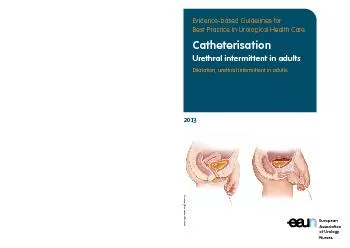PDF-Evidence-based Guidelines for Best Practice in Urological Health CareC
Author : liane-varnes | Published Date : 2016-05-19
2 Catheterisation Urethral intermittent in adults 150 March 2013IntroductionThe European Association of Urology Nurses EAUN was created in April 2000 to represent
Presentation Embed Code
Download Presentation
Download Presentation The PPT/PDF document "Evidence-based Guidelines for Best Pract..." is the property of its rightful owner. Permission is granted to download and print the materials on this website for personal, non-commercial use only, and to display it on your personal computer provided you do not modify the materials and that you retain all copyright notices contained in the materials. By downloading content from our website, you accept the terms of this agreement.
Evidence-based Guidelines for Best Practice in Urological Health CareC: Transcript
Download Rules Of Document
"Evidence-based Guidelines for Best Practice in Urological Health CareC"The content belongs to its owner. You may download and print it for personal use, without modification, and keep all copyright notices. By downloading, you agree to these terms.
Related Documents














